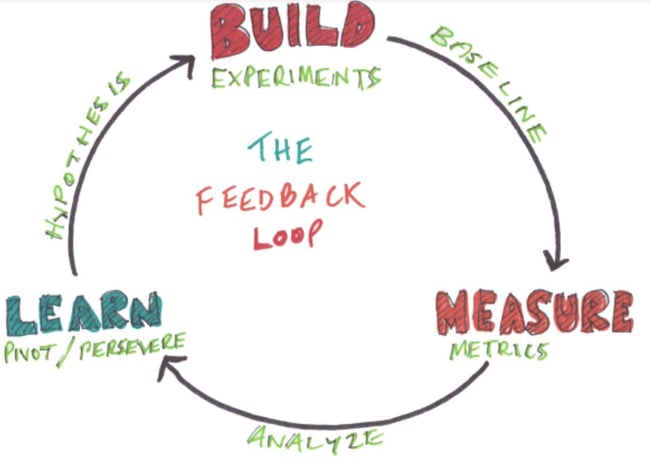
3 steps for a successful product rollout
Building a new product requires careful planning, analysis and constant learning, to increase the chances of its launch and uptake being a success. Here's Freddy Bruce, Product Manager, to explain the steps that we take at Goodlord.
One of the most exciting moments for a company is the rollout of a new product and this is no different at Goodlord. However, a significant swing and miss can break a company’s momentum - or even break its bank account. After months or years of development, many companies discover that customers are not willing to buy their new wares. However, there are steps you can take to obtain a more positive result.
At Goodlord, each time we launch a new revenue line, we focus on lean development principles and company goals to help direct us, and we ensure we have the answer to three key questions:
- Is our new product viable?
- Is it sustainable?
- Is it scalable?
The Learning Loop
Throughout development, we focus on working leanly and, to achieve this, we move through the Build-Measure-Learn loop as fast as possible.

We accomplish this by building a minimum viable product (MVP) — a version of a new product which allows the team to learn the most about customers' requirements with the least effort. For example, a landing page where the user requests the product and, behind the scenes, we can do everything by hand. With the MVP, we work to minimise the total time we move through the loop so we can understand what our customers want and whether they'd buy the product quickly.
Secondly, to maximise sales, we set three clear sales milestones: zero to one; one to one hundred; and one hundred plus. Moving through the build-measure-learn loop helps guide us as we work towards each milestone.
Zero to One: A viable product
What does it take for us to sell one of a product? This is proof of a viable product, i.e. someone is willing to pay us for it.
Sometimes interdependent activities that are required to execute a sale can be underestimated. Focusing on selling just one ensures we go through the process end to end and understand all the moving parts, to understand all the steps required.
We also go out to find our early adopters. These are a special breed of customers, who accept and in fact prefer, an 80% solution - you don’t need a perfect solution to capture their interests. As you are trying to validate your idea, seek out these customers, as you can trust them to help improve the product at this early stage.
One to one hundred: A sustainable product
There’s always someone out there willing to buy one, even if it’s just out of curiosity. Once we understand what it takes to sell one of a particular product, the next challenge is to prove that there’s actually a market and the potential to sell one hundred.
We still move through the Build-Measure-Learn loop. Each iteration of the MVP allows us to serve a few more customers. It also saves time in fulfilling the product and helps encourage our early adopters to become repeat purchasers. What do they need to become repeat purchasers, what are the blockers to this and what will we need to add to it?
More customers and repeat purchasers allows us to reach the one hundred milestone in a short timescale after selling to our first customer. This means we have a sustainable product that works.
One Hundred Plus: A scalable product
How do we reach every customer with this product? This is the question we ask ourselves to get to our One Hundred Plus milestone and make it a scalable product.
Our approach doesn't change. We don't spend months developing a scalable product and wait to release. We stick to lean principles and keep working to improve, even once on the market.
In summary
Building a new product is difficult and potentially expensive, as you're working with extreme uncertainty.
However, continuously moving through the learning loop can help reduce that uncertainty. It can also help the product development team understand the product from the perspective of the customer, and focus on building something that works now, rather than inventing something that might work in the future.
The viable to sustainable to scalable approach seems logical, yet how often have you had a new product discussion where the emphasis is on building for scale? That’s where the excitement is so that’s where people often start - even though it then makes them less likely to succeed.
Want to advance in your tech career? Check out the jobs we have available.
-1.png)